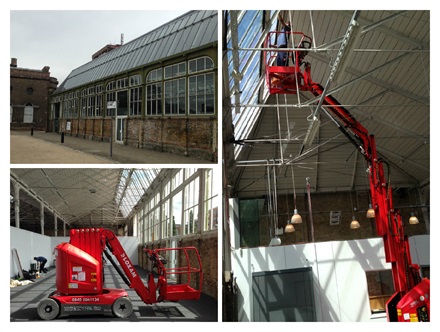
-
Chesham (Head Office)
-
01494 794477
- chesham@windowfilm.co.uk
-
London
-
020 3326 1718
- london@windowfilm.co.uk
-
Birmingham
-
0121 270 2250
- birmingham@windowfilm.co.uk

 The Royal Artillery Museum has been open since 1820 and is understood to be the oldest military museum in the world. The attraction plays host to a huge range of historic and valuable exhibits, and with a large quantity of glazing throughout the property, fading was a concern. The Window Film Company was approached to assist.
The Royal Artillery Museum has been open since 1820 and is understood to be the oldest military museum in the world. The attraction plays host to a huge range of historic and valuable exhibits, and with a large quantity of glazing throughout the property, fading was a concern. The Window Film Company was approached to assist.Fading is caused by a combination of three major factors; light, heat and UV rays, meaning that wherever there is untreated glazing, fading is a potential issue. The Artillery Museum benefits from a huge number of windows, many of which are situated in the building roof. Whilst this provides the facility with fantastic levels of natural light, it also follows that there is a high risk of damage from fading.
The brief was to supply a window film that provided fade protection, whilst still maintaining vision from both sides of the glass and without sacrificing natural light – a key component in the comfortable environment throughout the museum. The Window Film Company’s Climate Ultra film was identified as the most suitable solution. A technologically advanced film, this product has been developed to combine high performance with a limited visual impact. Providing glass with a light tint, the film will reject over 40% of solar energy (heat) whilst also blocking 99% of the sun’s harmful rays. Once installed, the film also serves to reduce glare by almost 25%, filtering out the harshest of the sunlight and ensuring a more comfortable viewing experience for visitors and staff alike.
Samples of the film were sent to the museum, allowing staff the opportunity to examine the product first hand, as well as experiencing the performance in situ.
With the film choice agreed, thoughts turned to logistics. With over 200 large panes requiring an application of film, a full survey was undertaken to ensure a full understanding of each windows’ location as well as any access issues. With much of the glass situated in the roof, it was clear that powered access equipment was required to carry out installation. Other considerations included the location of overhead lighting which was suspended from the ceiling. The placement of these lights meant that there was limited space for access, in turn meaning that specialist access equipment was needed – small enough to fit in what was a relatively small space, but powerful enough to extend to the necessary height.
The final, but vitally important component of the project was the movement and safe storage of exhibits for the duration of the installation, which would last for a total of two weeks.
With all logistical elements accounted for, the installation project could commence. A pre-determined area of glass was filmed each day, with a schedule outlining which glazing would be filmed on which date. The film was applied to the internal face of the glass, which ensures a longer functioning life for the product. Once installed, the Climate Ultra was effective immediately, serving to prevent the build-up of excess heat, helping with glare and most importantly of all, blocking out the harmful UV rays.
Thanks to careful planning and the experience of The Window Film Company’s installation teams, the project was completed on schedule, with the finished project delivering valuable fade protection for the exhibits within. The windows took on a slight yet stylish tinted appearance, allowing for the transmission of natural light and maintaining the view from both sides of the glazing – ensuring the light, airy and comfortable atmosphere in the museum was protected.
For more information about fade protection or any of the other range of films supplied and installed by The Window Film Company, please contact a member of the team on 01494 794477 or email info@windowfilm.co.uk.
* Front Door Window Film
* How To Frost Windows
* Stick On Window Films
* High Quality Window Films
* Window Tinting for the Home
* Conservatory Roof Films
* Window Protection Films
* Window Foils & Glass Films
* Window Film to Block Sunlight
* High Performance Window Films
* Window Film to Block the View
* Translucent Window Films
* Bathroom Window Film
* Kitchen Window Film
* Obscure Glass Window Film